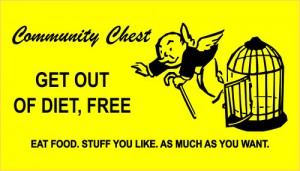 I used to think that dieting was for chumps.
I used to think that dieting was for chumps.
That was before I got way fatter than I expected (Damn you, mee goreng!) It really sucked to feel pudgy, so I embarked on my 4th LifeTest: To lose 5 kilograms.
And after 13 long weeks, I’ve succeeded. I’ve gone from 70kg down to 65kg, and lost 2.5 inches off my waist. I feel healthier, way more energetic, and best of all, I can now wear a T-shirt without looking pregnant.
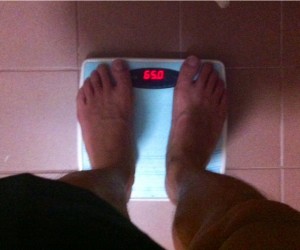
I did all that without eating less or exercising more. In fact, I gulped roti prata, curry puffs and beer on a weekly basis, and I went for a carb-filled 6-day vacation in between.
The secret: I simply changed what I ate (you can read the full excruciating details of my diet here, with the original reasons why I started here). The diet I took on was the Slow-Carb Diet, from Tim Ferris’ book The Four-Hour Body. It follows 5 basic rules:
- Avoid “white” carbohydrates
- Eat the same few meals over and over again
- Don’t drink calories
- Don’t eat fruit
- Take one day off per week and go nuts
Today, I want to walk you through the lessons I learnt, and how you can apply them to lose weight or improve your personal finances. At the end of the post, I’ll offer a couple of tips for those of you who’d like to try out the Slow-Carb Diet for yourself.
On Deep Assumptions
The first lesson comes not from me, but from the responses of everyone who heard I was on a diet:
“How can you not eat carbs or fruit? You need a balanced diet!”
“Won’t you feel really lethargic in the afternoons?”
“That’ll never work for me; I HAVE to eat rice/bread/noodles.”
“Won’t you put all that weight back on when you stop your diet?”
See if you can spot the Deep Assumptions lurking in the comments. One of them – the Extreme Reach Barrier (coined by Ramit Sethi) – came up in my recent post about Maria Kang. When I encourage people to try the diet for themselves, they’ll simply shake their heads and say, “But I don’t want to turn into some crazy fitness freak and spend my life counting calories.”
This doesn’t apply to just dieting. If you’re implementing a savings plan, people will cast a suspicious eye at you and go, “What’s the point of living life if you’re always pinching pennies?”
You can see the obvious fallacy here – you don’t need to go to the extreme if you simply want to improve a certain aspect. Often, pursuing a goal isn’t as crazy of an endeavor as most people make it out to be – but they fall back to the Extreme Reach Barrier to absolve themselves from the responsibility of taking action.
On Testing Those Assumptions
Here’s the hard truth – it’s extremely difficult to recognize our own Deep Assumptions. The only real way to do it is to actively test everything. Take nothing at face value.
For example, take the assumption of “You MUST eat rice if you want a “balanced diet” (Never mind that millions of healthy, normal people around the world don’t eat rice on a regular basis).
Or the assumption of “Not eating carbs will cause you to be lethargic in the middle of the day” (By cutting away carbs during lunch, I actually prevented my usual post-lunch crash since I wasn’t ingesting any sugar).
Of course, as Singaporeans having grown up eating rice, it’s extremely difficult for us to give up those assumptions because they’re all that we know. But if we only tested them by doing the research, we’d discover that it’s entirely possible to have a healthy, balanced diet without rice or fruit.
It’s the same when it comes to personal finance. Assumptions like “I’m not rich enough to invest” or “ETFs are Specialized Investment Products, so they must be risky” are all testable assumptions. Instead of burying your head in the sand, spend 1 hour researching and testing to see if your beliefs hold up.
On Willpower and Systems
Here’s what I found surprising about this diet: It didn’t take a lot of willpower at all. The conventional wisdom is that most people fail at diets because they don’t have enough willpower to pursue it. They’ll say things like, “He could lose some weight if he just tried harder.”
This is completely untrue. I found out awhile back that willpower is unreliable. I’d rather not stake my success on it. Instead, a much better way to stick to a commitment is to use systems: sets of clear rules that dictate your behavior.
The Slow-Carb Diet has a list of specific foods that you can or cannot eat. It recommends that you come up with a few meals and eat them over and over again. In short, I never have to think – when lunchtime rolls around I simply eat the same meals I decided on previously (in this case, yong tau foo, sliced fish soup, and chicken chop without fries).
Contrast this method with an aspiring dieter who simply says, “I’ll just buckle down and eat less.” This is simply another version of “try harder”, which is doomed to failure.
It’s no secret that I’m a big fan of using systems to repeat desirable behaviors. For example, my saving, spending and investing are all dictated by rules: I automatically save and invest $X every month, and spend $Y on whatever I want.
Systems and rules remove decision-making. The less decisions you make, the easier it is to repeat good behaviors.
On Tracking Your Progress
The adage “Whatever gets measured gets managed” isn’t a cliché – it’s true. But not in the way you think. Tim Ferriss once mentioned:
“The act of measuring in and of itself makes you more aware of decisions.”
That means if you simply measure yourself – with no specific goals, no targets, nothing – that still makes you more mindful of your goals, and it’ll likely propel you to where you want to go.
For this LifeTest, I weighed myself weekly at the same time and the same day of week. I carried a tape measure around so I could measure my waist. I took pictures of my half-naked self on my phone, of which I would be extremely embarrassed of if my phone ever got hacked.
All that measuring made me more mindful of the decisions I made, and more motivated to finish the task. If I felt sick of eating my 92nd bowl of yong tau foo, I’d remind myself of how my weight numbers were quantifiably falling because of it.
Measuring works for personal finance too. There mere act of recording your savings balance every month helps you to see the progress you’ve made – which is strangely fun and motivating. It becomes a game – what will I get next month? What if I don’t buy a new iPhone? Will that boost next month’s score?
Measure what you’re trying to achieve. It works.
On Hitting Goals
I could have stopped this LifeTest 4 weeks ago, but I chose to continue. The initial motivation for starting this test was to get a “sexier tummy”, and less than 8 weeks into the diet, I was able to fit into a T-shirt I hadn’t worn since college. Yet, I was still 2 kg away from my stated goal of 65kg, so I had to press on. Later, my clothes started getting a little baggy, which was more than enough reason to stop. But I knew that if I stopped trying without hitting an objective target, it would be far easier to stop trying for other goals.
It’s far better to achieve too much success than to psychologically label yourself as an “unfinisher”.
I can’t think of how this applies to personal finance (I doubt anyone would shy away from having “too much money”), but I just wanted to put this out there.
Tips For Successfully Completing the Slow-Carb Diet (or any other diet)
- Have very clear, pre-defined rules. Never second-guess what you can or cannot eat – Pick 3-5 dishes and eat them repeatedly. This is not as tough as it sounds (the majority of us generally eat a few dishes without realizing it anyway).
- Have a very clear, unambiguous goal. “Be slimmer/fitter/hotter” is not a clear goal. “Fit into size 10 jeans without sucking in” is not bad. “Hit 65kg” is better.
- Have a cheat day. That’s one day a week where you can go absolutely nuts and eat whatever you life: Fast food, ice cream, soft drinks, whatever. This has the dual benefit of 1) keeping your metabolic rate up, and 2) keeping you sane.
- Measure, measure, measure. Weigh yourself, measure your waist, and take pictures on a weekly basis. The mere act of seeing how far you’ve come is more than enough motivation to keep going.
- Accept that weight loss will be gradual. I lost around 0.5kg/week, but there were some weeks where I plateaued or even gained weight slightly. This is completely natural, and more sustainable than losing a lot of weight fast before putting it back on again. Trust the system and don’t give up.
That’s it! I apologize for the long post, but I am pretty happy that I managed to hit my goal after 13 long weeks. 5kg may not seem like that big of a deal to most people, but it was a huge breakthrough for someone like me who’s never been on a diet before.
The key question now is: Am I going to go back to eating carbs, putting back all the weight I lost? Hell no. I’ll probably introduce some carbs back into my diet, but nowhere near what I was having previously (Gonna have to come up with some ground rules for this new “weight-maintenance” diet). Also, the great thing about having succeeded once is that I know I can do it again – if my weight gets too out of hand, I’ll know exactly what I have to do to get back in shape.
Have you tried any diets that succeeded or failed, or are you thinking of giving the Slow-Carb Diet a try? Leave a comment below or send me an email to let me know. I’d love to hear from you.
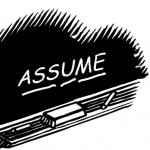
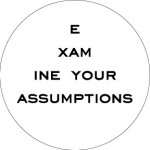


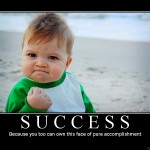

Hi Lionel, glad you have success with the slow carb diet. What are the meals you eat ? Most of our food here are carb based so it can be difficult to avoid carbs, especially if we eat out.
Carb based meals are usually cheaper and keeps us full longer. Does your new diet cost more per meal?
I initially thought carb-filled meals would make me feel full for longer, but I found that wasn’t really true. In fact, once I started eating meat, fish and tofu, I wasn’t subject to the usual stomach-growling in the late afternoon. Though yes, you’re right that the bad side of it is that it costs more, usually $2-3 more per meal. In the grand scheme of things that amount doesn’t add up to that much (approx $100 per month max), but take it as a fee to pay for looking better and being slimmer 🙂
Stuff I ate: yong tau foo, chicken chop with without fries, fish soup without rice. If I’m lucky, I also get to eat homemade minced beef, salmon, and crabcakes.
Didn’t knew that roti and pratha exits outside Indian subcontinent. But roti and pratha are essentially two different foodstuff in India 🙂
Cool, didn’t know that!
Thanks for the info. What did you have for breakfast.
Yong tau foo without noodles every day – it got a bit tiresome, but it was effective 😉
Hi Lionel,
Congrats and your story is inspiring! Instead of losing weight, I hope to be stronger and fitter and guess such a diet should help too.
Completing a “difficult challenge” like this will give one greater self-belief in achieving other types of goals, including financial targets.
Way to go!
Thanks!
does this diet works for the waist area only? will it reduce on the thighs and upper arms?
Hi Celly, in general, diets tend to reduce fat on your entire body. At least, that was my experience on this diet 🙂
I’d like to know what your new maintenance diet is like now. Could you share it? 🙂 Cheers!